Personal Floatation Devices – The Ultimate FAQs Guide
Welcome to a quite efficient guide about personal floatation devices!
Following the guide on personal floatation devices can help you in checking for the qualities to see in a personal floatation device, to keep you updated about the uses, types, maintenance, advantages, and disadvantages of these devices, and answer many of your common questions that might arise in your mind when you are planning to grab one.
1. What Is A Personal Floatation Device?
A personal floatation device is a device that keeps you afloat on the surface of the water.
It might be a life jacket, an inflatable life belt, a life vest, a floatation ring, buoyancy aid, or a life preserver. It is available in the market in various shapes and types.
A personal floatation device helps in breathing while being in the water. It holds your head above the surface of the water.
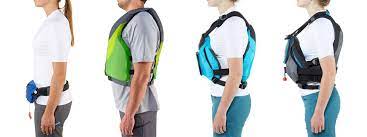
Figure 1: Personal Floatation Devices
2. How Does A Personal Floatation Device Work?
A personal floatation device works on the principle of buoyancy. As the name shows, its major function is to keep the wearer afloat on the surface of the water.
As the user enters the water, the personal floatation device inflates, either automatically or manually.
It adds a few extra pounds to the weight of the user, and then density difference plays its role in the floatation.
The total density of the air inside the device is lower than that of the water, which prevents the device as well as the user from drowning. The density difference keeps the user’s body above the surface of the water.
3. How Many Types Of Personal Floatation Devices Are There?
There are five different types of personal floatation devices available in the market. All of them have different structures and appearances. Each one is best for a specific activity.
https://www.boaterexam.com/boating-resources/personal-flotation-device-types.aspx
- Personal floatation device type 1 is the device that is commonly known as “offshore life jacket.”
- It can be used in every type of water. This is useful for open as well as rough waters.
- One of the biggest advantages of using this type of floatation device is that it can keep the unconscious users in a face-up position. This means that if anyhow the rescue is delayed, then this type of personal floatation device is really helpful in saving the life of the user.
- The disadvantage of personal floatation device type 1 is that it is quite difficult to swim with wearing it on. The size is large and awkward to wear and might not let you breathe.
- Personal floatation device type 2 is the device that is commonly known as “near-shore buoyant vest.”
- It can give its best performance in the calm waters. The inland waters are mostly calm, and there are easy chances of rescue.
- One of the biggest advantages of using this type of personal floatation device is that it can help the person move easily and keeps some wearers in the face-up position.
- The disadvantage of personal floatation device type 2 is that it might not keep many unconscious wearers afloat, and if the rescue time is delayed, then it might not be useful.
- Personal floatation device type 3 is the device that is commonly known as “floatation aid.”
- It can also give its best performance in the calm waters and the inland waters.
- One of the biggest advantages of using this type of personal floatation device is that it can help the person move his hands and feet easily. It is mostly best for use in swimming. The body feels relaxed and breathable.
- The disadvantage of personal floatation device type 3 is that it does not keep the wearers afloat by itself, and the wearer has to keep his head in a face-up position. If the user becomes unconscious, then the rescue might not be possible.
- Personal floatation device type 4 is the device that is commonly known as “floatation device.”
- It can give its best performance in all types of water. Whether the waters are calm or rough, this type of device is useful.
- One of the biggest advantages of using this type of personal floatation device is that it is very comfortable to carry.
- It is basically not meant to wear. It is a rescue device. It is thrown in waters and grasped by the person in the water to rescue him. It includes floatation rings, cushions, horseshoe buoys, and many other such devices.
- The disadvantage of personal floatation device type 4 is that it is not designed to be worn; it is for the waters with heavy boat traffic.
- Personal floatation device type 5 is the device that is commonly known as “special use device.”
- It can give its best performance in some special activities and in some specific types of waters.
- These types of devices need approval and checked by USCG approval, and their condition is checked on the label.
- One of the biggest advantages of using this type of personal floatation device is that it can help in maintaining temperature and provide hypothermia protection.
- The disadvantage of personal floatation device type 5 is that it is designed for some specific types of waters only and might not be as useful as other types are.
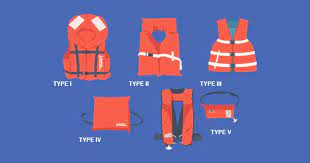
Figure 2: Types of PFDs
4. What Is The Average Life Span Of A Personal Floatation Device?
A properly cleaned, maintained, and stored personal floatation device can work for as long as10 years.
All that a personal floatation device needs should be checked properly for any kind of wear and tear. The molds or waterlogging must be checked, and there should be no molds or algae stains in it.
After long-term use, the personal floatation device must be washed properly according to the recommended method. After washing, the device must be dried as properly as possible. A single drop of water might cause molds and smell in the jacket.
5. Do We Really Need To Replace A Personal Floatation Device?
Yes, the personal floatation devices need to be replaced once they have expired. When it comes to expiry, the working of a personal floatation device stops which indicates its expiry.
The personal floatation device should be replaced if it does not keep your head above water comfortably.
The device might stop working depending upon various factors. If the personal floatation device is not taken care of, it might expire within 2 to 3 years, but if it is taken care of, it might surprise you with its life.
If the floatation device has its air leaked or a cut or bruise in it, then it needs to be replaced.
Any problems in the gas cartridge or the straps can also be a sign that you need to replace your personal floatation device.
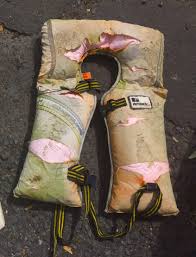
Figure 3: Expired Personal Floatation Device
6. What Are The Important Rules Of A Personal Floatation Device?
https://www.boatsmartexam.com/knowledge-base/article/life-jackets-pfds/
There are certain things that are necessary to be noticed in a personal floatation device:
- It must be approved by the cost-guard for its maintenance.
- The condition of the personal floatation device must be serviceable.
- The size of the personal floatation device should be the exact size of the user. A loose or tight floatation device might not perform its function.
- Every adult, as well as children, is supposed to wear personal floatation devices when they are in waters.
- There should be no damages, cuts, bruises, or any other maintenance issues to the device.
- It should not be too warm or too cold. The personal floatation device you choose must be aided with thermal protection.
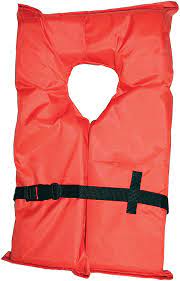
Figure 4: USCG Approved Life Jacket
7. Is There Any Difficulty In Wearing A Personal Floatation Device In Water?
Yes, a personal floatation device might be a little difficult to wear in the waters. They are mostly meant for wearing on boats and while kayaking.
In waters, they might not help proper and easy movement while swimming or being in water directly.
The best way of using the personal floatation device is to wear them while operating a boat or traveling in some water-based devices.
8. What Are The Major Differences Between Life Jackets And Personal Floatation Devices?
https://redoriginal.com/blogs/news/difference-between-lifejacket-pfd
There are no major differences between the life jackets and the personal floatation devices.
- Life jackets are basically a type or example from the variety of personal floatation devices in the market,
- Life jackets are meant to keep the person afloat; however, personal floatation devices are useful in rescuing the drowning person or swimming aid. They are also useful in keeping the person in a head-up position.
- Personal floatation devices are usually more comfortable than ordinary life jackets,
- A personal floatation device can be worn all day long, but the life jackets are usually not comfortable to be worn for long periods of time.
- A personal floatation device lets your body breathe even when you are wearing it for long spans of time, but the life jackets sometimes do not let the body breathe and might cause irritation.
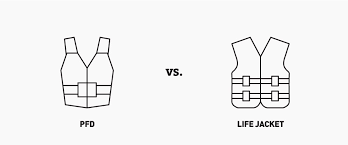
Figure 5: Comparison Between A Life Jacket And a PFD
9. How Is A Personal Floatation Device Maintained?
The personal floatation devices are quite easy to maintain. They do not require very high maintenance. Instead, they can be kept in a very in very good condition even at low maintenance.
They do not demand proper care or any extra time even when they are not in use.
The only thing required is that it must be dried out in the sun when it has been used or before storage.
It should be cooled down properly, and the user should make sure that there is not even a single drop of water in the life jacket to avoid molds,
They do not require any kind of high maintenance. Just keep a check on any kind of wear and tear or puncture in the device.
10. When Does A Personal Floatation Device Expire?
There is no such expiry date or life limit for personal floatation devices. A personal floatation device can go for a very long time without expiring if it is maintained and checked properly.
Personal floatation devices never stop working, but they might become void if they are repaired, altered, and amended many times.
By the expiry of a floatation device, we mean that its ability to add extra pounds to the user fails. The material of the personal floatation device loses its buoyancy aid.
11. What Type Of Personal Floatation Devices Are Considered Ideal?
The ideal personal floatation device is the one that is exactly your size and fits your body. However, the most comfortable form of the personal floatation device is the one that covers your body completely but also allows your body to breathe.
It must keep your head above the surface of the water and your chin facing towards the front.
It should not bound your movements. Your feet, hands, and head should be allowed to move in any direction conveniently.
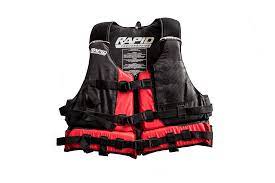
Figure 6: An Ideal Personal Floatation Device
12. In Which Activities Can A Personal Floatation Device Be Used?
Personal floatation devices can be used for various activities. All the water sports need to be performed with the life jackets on.
Boating is the activity that requires everyone on the ship to wear life-saving devices in order to ensure their protection against drowning in case of any mishap.

Figure 7: Use in Boating
Kayaking is another water-based activity that demands the kayaker wear life jackets. Kayak life jackets are the most common floatation devices available in the market.
They work on the principle of buoyancy aid and can be really helpful in ensuring the safety of the player.

Figure 8: Use in Kayaking
Swimming also requires a personal floatation device to ensure protection.
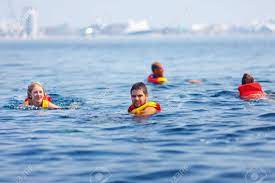
Figure 9: Use in Swimming
13. What Are The Main Advantages Of Wearing A Personal Floatation Device?
The standard personal floatation devices have the following advantages.
Buoyancy:
The most important thing in a personal floatation device is its buoyancy. It keeps you floating.
Personal floatation devices have been designed with special, inborn buoyancy. It means that when you enter the water, the devices start functioning in keeping you afloat.
All you have to do is to wear it properly, and then the personal floatation device provides you with floatation.
Easy to maintain:
The personal floatation devices do not require any high maintenance.
They need to be dried properly in the sunlight. When you have to store them, make sure that they are completely dried and cool. A single drop of water might be the reason for fungus and can destroy your jacket.
Versatility:
There is a versatile range of uses of personal floatation devices. They can be used for many purposes.
They are used for a variety of water sports. They are used for swimming, paddling, fishing, and even water skiing.
14. What Are The Disadvantages Of Using A Personal Floatation Device?
Yes, there are some disadvantages of wearing personal floatation devices. Here are some of them.
Uncomfortable:
Out of all the personal floatation devices, life jackets cannot be worn all day long. They might be problematic for some people during the hot summer season because they can they do not let your body breathe on its own.
Fewer benefits in rough waters:
Some of them might not turn the face-up if the user becomes unconscious.
They might not be a good option for survival in rough waters except type 2 personal floatation devices.
Not graspable:
Type 5 personal floatation devices might not be grasped by the user, especially if he is unconscious. This makes the personal floatation device a little less reliable.
15. What Type Of Personal Floatation Device Is Best For Use In Rough Water?
The best and the most recommended type of floatation devices for use in the rough waters are the type 2 personal floatation devices.
They cover the body, and their material is specifically selected to keep the person balanced and comfortable in the rough waters as well.
Type 2 personal floatation devices are also designed to keep the user’s face in the up position even if he is panicked or becomes unconscious due to any reason in the waters.
Type 2 material is not easily worn out or torn by regular use.
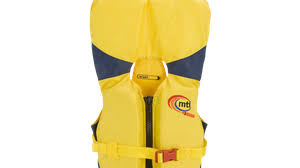
Figure 10: Type 2 Personal Floatation Device
16. How Can One Check The Buoyancy Of A Personal Floatation Device?
The buoyancy of the personal floatation device can be checked by a simple method.
http://palmequipmenteurope.com/blog/2016/06/08/how-to-check-your-pfds-buoyancy/
To check for its buoyancy, inflate the personal floatation device on and keep it in some shallow water. If the device keeps on floating and does not drown, it indicates that the device is working.
Another method is to put the device on and then wade into a pool of shallow water.
If you feel that your head is above the surface of the water and you can float on your back with bent knees, it means that the buoyancy is intact.
17. What Amount Of Weight Can A Personal Floatation Device Carry?
A personal floatation device can provide about 7 to 12 additional pounds to the body.
The personal floatation device is not meant to support the entire physical weight of the body. Their function is to add a few extra pounds that are used by the air to provide density difference.
Irrespective of the weight of your body, the personal floatation device keeps you afloat on the surface of the water.
18. Are All The Personal Floatation Devices Automatically Inflatable?
No, it is not true that all personal floatation devices inflate automatically. Two main types of inflatable personal floatation devices are:
- Ones are those that inflate automatically.
- Others are those that inflate manually.
The automatically inflating personal floatation device inflates automatically on touching the surface of the water. A special pill keeps the device from inflating normally. Water makes the pill dissolve, causing the device to inflate.
However, the manual personal floatation device needs to be inflated by hand. This is done by applying great pressure in pulling a certain band from the gas cylinder that then helps in filling with the air inside.
19. Can You Drown Even When You Are Wearing A Personal Floatation Device?
Yes, this is absolutely possible that a person wearing a personal floatation device drowns in the water. However, this only happens if there are very rough conditions of water and if the device was not checked before going on board.
Sometimes, a minor cut or a small hole can be the serious reason for the drowning of a person.
Moreover, the rough weather conditions and extremely cold water or strainers can make a person drown. Personal floatation devices only increase the chances of survival. They never ensure the safety of the wearer.
20. Can A Personal Floatation Device Save Your Life?
A personal floatation device might not always be helpful in saving your life. It depends upon the condition and the type of the floatation device whether it will be able to save you or not.
If the life jacket is not the exact size of the user or if it is not comfortable to him, it might not help in keeping the user afloat.
A mismanaged personal floatation device might cause a great problem.
If the user is not aware of the use of the device, he might not be able to handle it, and hence he might get drowned.
If the device is the type that does not keep the user in a face-up position and the user becomes unconscious, it might not help in saving the user.
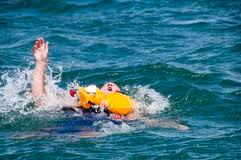
Figure 11: A Person Drowning with A PFD On
However, it does not always make you drown. The main purpose of a personal floatation device is to keep the user protected when they are in waters.
A fit, regularly maintained life jacket keeps you afloat over the surface of the water.
Type 1 and type 2 personal floatation devices are usually the best ones to save your life.
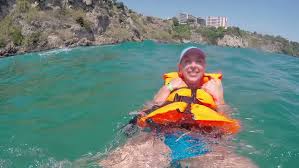
Figure 12: Another Person Swimming with A PFD on
